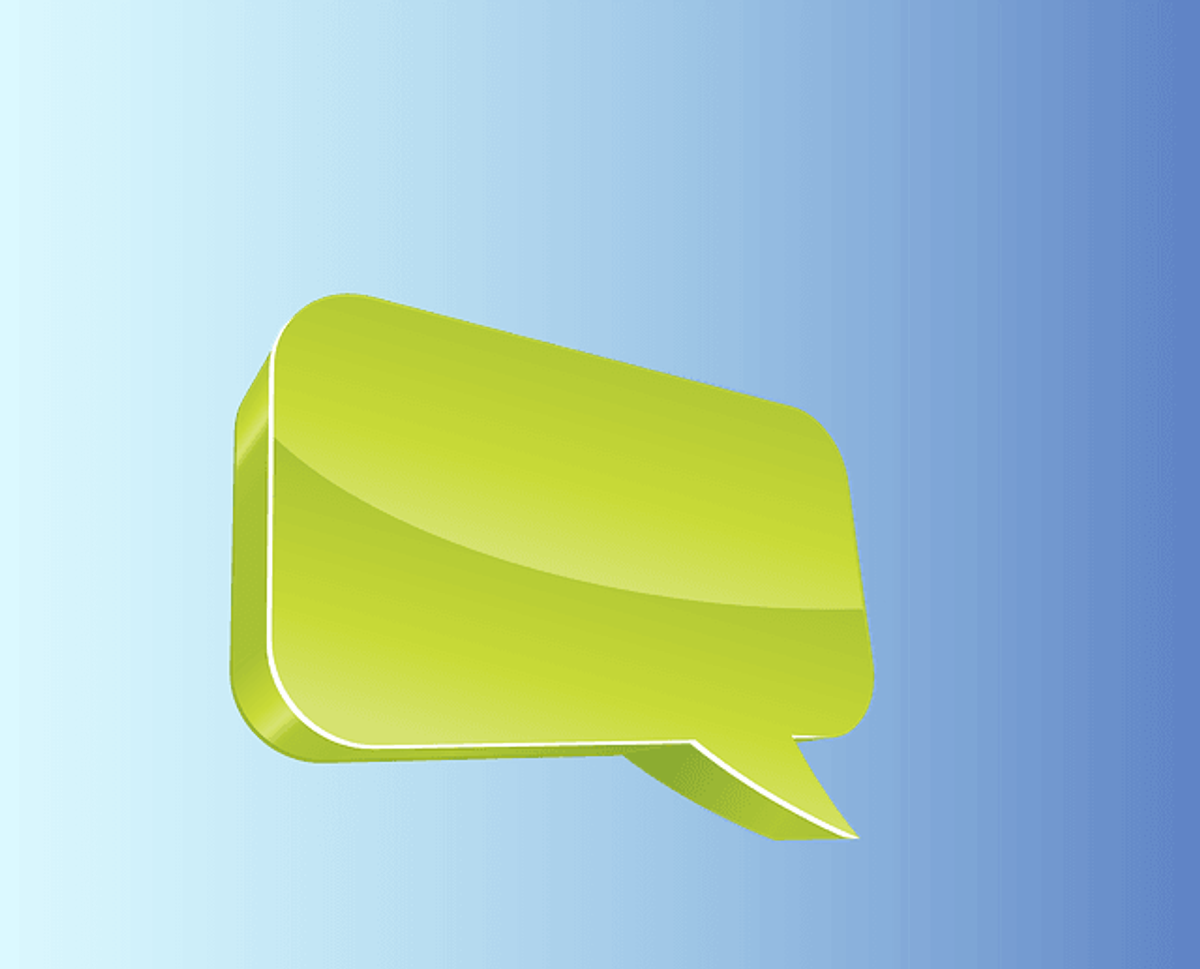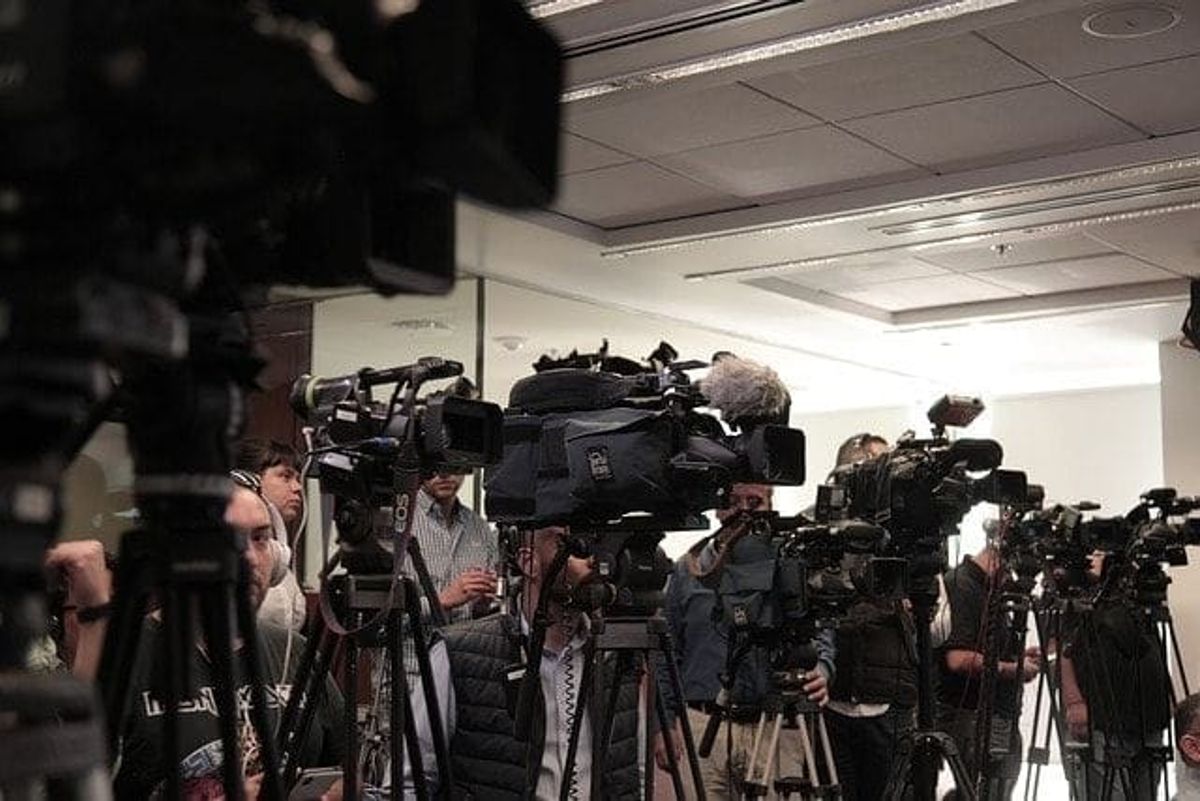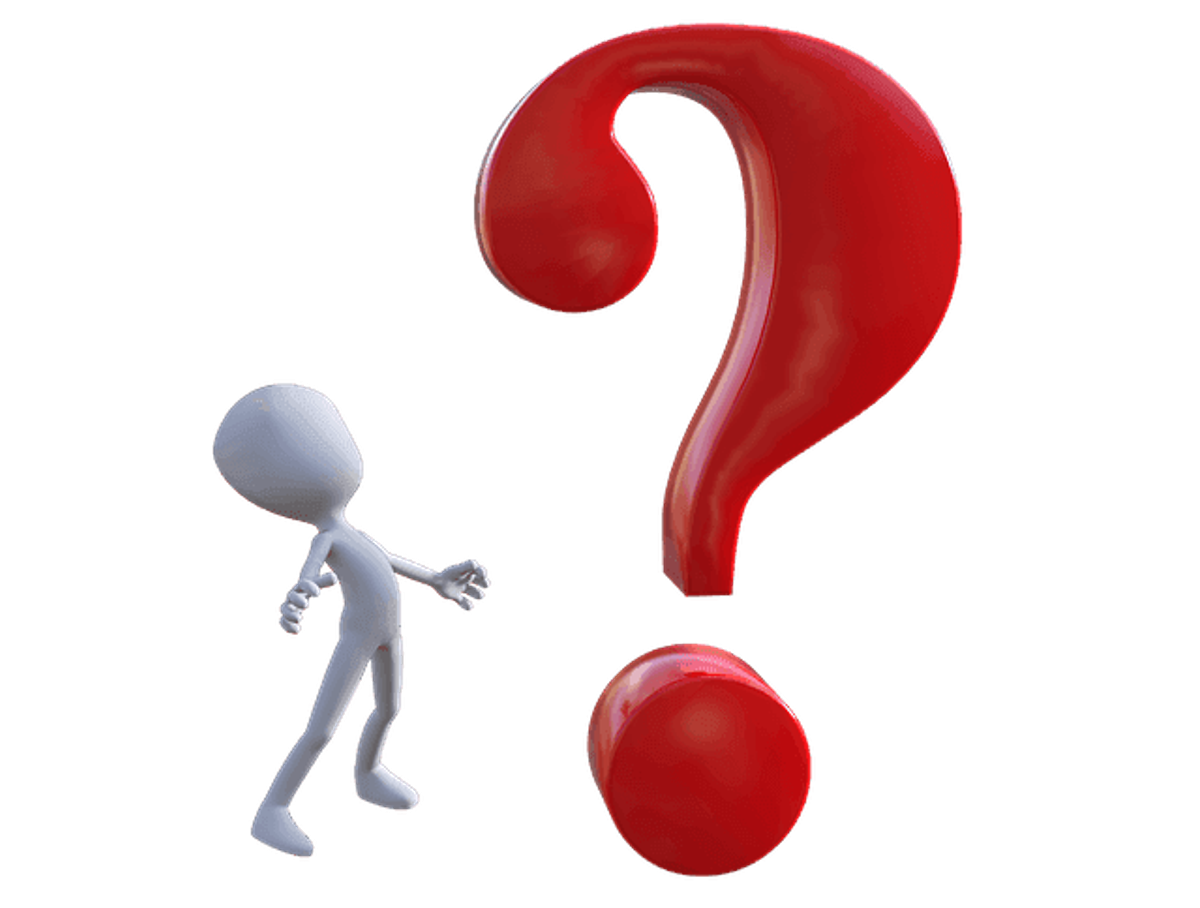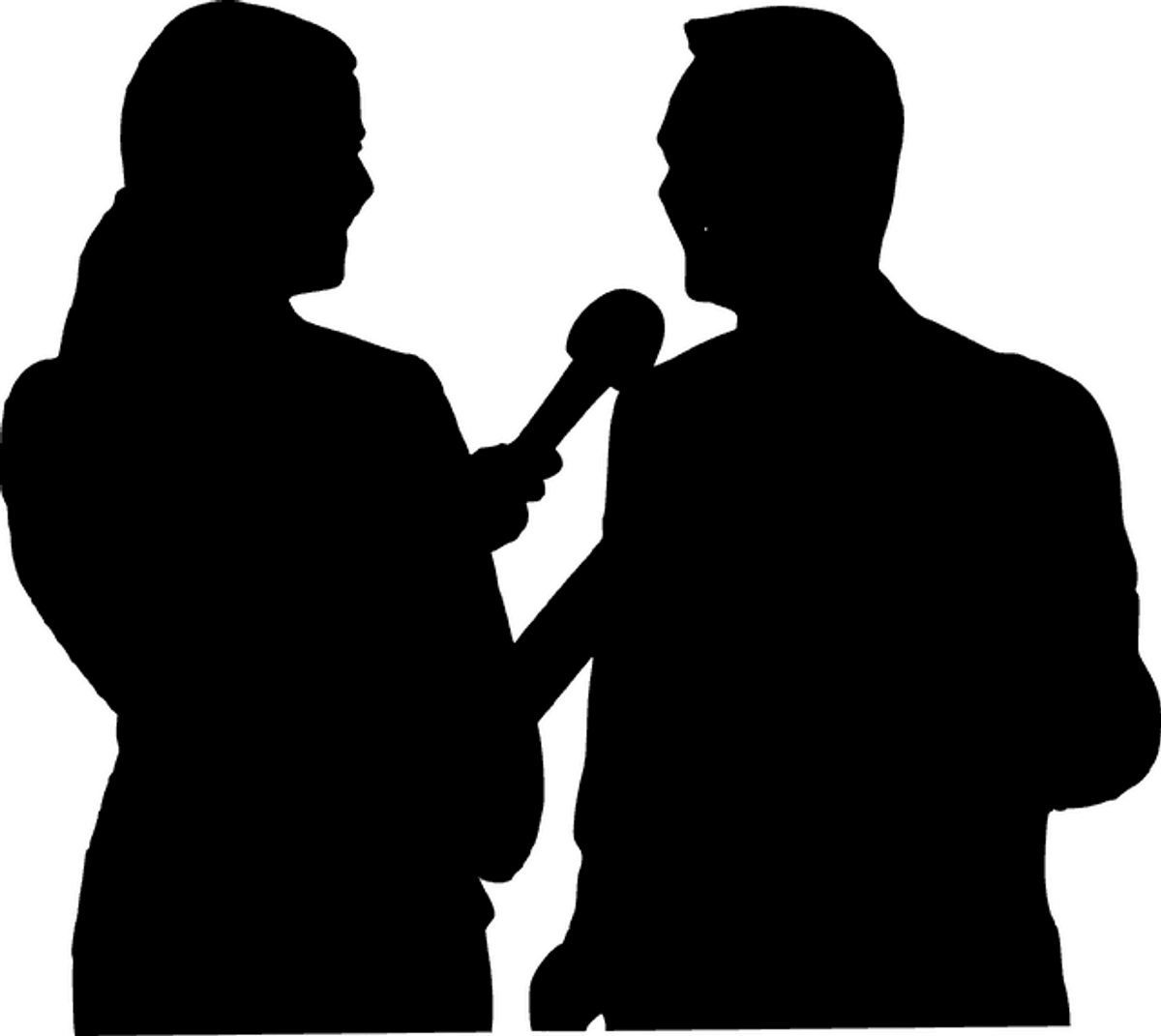How to Prepare for a News Interview

Preparing for a news interview can significantly impact its outcome and help convey key messages to the audience effectively.
Quick Summary
Effective preparation for a media interview, whether on television, radio, or via phone, can significantly enhance communication and impact. Establishing key messages is crucial, helping maintain clarity and focus throughout the discussion. Understanding the audience and the media outlet allows for tailored responses, while practicing answers promotes confidence during the interview. Maintaining composure, utilizing vocal cues for radio formats, and employing techniques like “bridging” in respon
Whether it's a media interview for television, radio interviews, or even a phone interview, having a well-thought-out strategy can make a difference.
A successful media appearance may require careful planning, including identifying the interview's core messages, understanding the audience, and practicing responses. The interview preparation process can help ensure a consistent, clear message is delivered across all media outlets, whether they involve broadcast media, print, or digital.
Ready to Grow Your Business?
Get a free consultation and custom strategy tailored to your goals.
Remember, while this post offers some ideas, it's essential to conduct your own research to tailor these strategies to your unique situation.
Why Media Interview Preparation Matters

Media interviews can be a powerful tool for building credibility, sharing knowledge, and establishing oneself as an expert. A media interview isn't just about answering questions; it can be an opportunity to connect with a specific audience, communicate effectively, and illustrate key points that support the overall message.
The right preparation may help ensure a polished performance during media interviews and turn a potentially daunting experience into an effective way of communicating key messages. Interview preparation can also allow one to stay up to date with industry trends, which may help in answering questions that are not directly related to the main subject but still arise during the conversation.
Setting Clear Key Messages

An essential part of preparing for a media interview is defining the three key messages that are intended to be communicated. Key messages are the foundation of interview preparation, and they can provide focus and consistency for the media appearance. It's important to determine these messages well in advance and adapt them based on the specific audience of each media outlet.
Core messages may include talking points that highlight the most critical aspects of the subject. They may also involve simplifying complex ideas into sound bites that are easily digestible for the audience.
These key points can be great for keeping your main message clear, even if the interview goes off on a tangent or the reporter starts asking about different topics.
Understanding the Media Outlet and Audience

Before a media interview, researching the media outlet and the specific interviewer can provide valuable insights. Understanding the type of audience—whether it's a specialized industry group or a general public audience—may guide how the key messages are tailored and presented.
Television interviews, radio interviews, and phone interviews may each require different approaches in terms of energy, delivery, and tone. It may also be helpful to watch or listen to previous interviews conducted by the reporter to understand their style and the kinds of questions they tend to ask.
Interview preparation is about more than just answers; it's about aligning the message with the expectations and interests of both the journalist and the audience.
Additionally, it may be essential to adapt the language used for the target audience. Avoiding industry jargon and using examples that are relatable can make the interview more impactful. Most people respond better when complex ideas are broken down in a way that's easy to understand.
Interviewers often prefer responses that are concise yet informative, providing insight without overwhelming the listener.
Practicing and Preparing Responses

Practice can be key when it comes to delivering a confident media appearance.
This may involve rehearsing answers to potential questions and practicing speaking slowly to ensure clarity. Media training sessions may also be a helpful way to prepare effectively, offering feedback on tone, body language, and phrasing.
Ready to Grow Your Business?
Get a free consultation and custom strategy tailored to your goals.
Preparing thoughtful responses in advance may help maintain confidence during the actual interview. By anticipating potential questions, key messages can be reinforced.
Practicing responses can also help one stay calm and focused, even if a reporter's question is unexpected or challenging.
Practicing for a media interview can involve using different scenarios, such as responding to a tough question or dealing with an unexpected topic. It can also include watching recorded practice sessions to see how key points are coming across. Media training often focuses on creating short, impactful responses or sound bites, which are increasingly popular for both television and radio interviews.
Delivering a Confident Media Appearance

During the actual media interview, it is important to stay calm and focused. Keeping eye contact, using clear language, and speaking slowly can help ensure effective communication. Listening carefully to the reporter's questions is also essential, as it allows for thoughtful responses that directly address the topic at hand.
If a question is unclear or unexpected, taking a brief moment to gather thoughts before answering can be helpful. This may help ensure that responses remain aligned with the key messages.
Providing examples to illustrate key points can make the message more relatable for the audience.
For radio interviews and phone interviews, it may be especially important to use vocal cues to convey enthusiasm and maintain the listener's interest. Since visual cues are absent, the tone of voice, pacing, and emphasis on keywords can play an even more significant role in communicating effectively.
Handling Difficult Questions

Sometimes, reporters may ask challenging or unexpected questions during a media interview. Preparing for these moments in advance can make a big difference. It may be helpful to anticipate difficult questions and develop clear, concise answers that bring the conversation back to the core messages.
If a question cannot be answered directly, it can be useful to acknowledge the question and then pivot to a related topic that reinforces the key points. This technique, often called "bridging," may help ensure that the interview stays on track and that the main messages are communicated effectively.
It is also important to stay composed, even if the questions seem confrontational. Keeping a calm demeanor and focusing on the key messages can help ensure a positive outcome, regardless of the direction the interview takes.
Post-Interview Follow-Up

After the interview, it can be helpful to send a note thanking the reporter. This gesture not only shows appreciation but also may help build a positive relationship for future stories. It may also be helpful to review the interview recording to evaluate performance and identify areas for improvement.
Providing feedback to the media outlet, if appropriate, can also be a good way to establish a collaborative relationship.
Ready to Grow Your Business?
Get a free consultation and custom strategy tailored to your goals.
Reflecting on what went well and what could be improved may help in preparing for future media appearances and ensuring that key messages continue to resonate with the intended audience.
Conclusion: Preparing for a News Interview

A successful media interview often requires careful preparation, clear key messages, and an understanding of the audience and media outlet. By setting clear goals, practicing responses, and staying calm under pressure, one can help ensure that the key messages are communicated effectively.
Whether it is a television interview, a radio interview, or a phone interview, the principles of good interview preparation remain the same. With the right planning and tools in place, a media interview can be a good opportunity to share knowledge, build credibility, and connect with the audience.
Remember, each media appearance is a chance to improve and refine the approach. By learning from each experience and continuing to adapt, one may become increasingly effective in delivering messages that resonate and make an impact.
Managing Your Non-Verbal Communication and Body Language
Non-verbal communication can convey as much information as your spoken words, particularly during television interviews where viewers can observe your entire demeanor. Your posture, facial expressions, hand gestures, and overall energy level contribute significantly to how your message is received. Maintaining good posture by sitting up straight or standing confidently demonstrates authority and credibility, while fidgeting or slouching can undermine your expertise regardless of how well you articulate your points.
For television appearances, dress appropriately for the show's format and audience, avoiding busy patterns or colors that may distract from your message. Make eye contact with the interviewer rather than looking directly at the camera unless specifically instructed otherwise. Keep hand gestures natural and controlled, using them to emphasize points without being distracting. Even during radio or phone interviews, maintaining good posture and gesturing naturally can actually improve your vocal delivery and energy level.
Practice your non-verbal communication during mock interviews by recording yourself or working with a media trainer who can provide feedback on unconscious habits that might detract from your message. Pay attention to nervous tics like touching your face, playing with jewelry, or excessive blinking. Remember that the camera may capture you even when you're not actively speaking, so maintain professional composure throughout the entire interview session.
Post-Interview Follow-Up and Relationship Building
The interview doesn't end when the cameras stop rolling or the phone call concludes. Following up appropriately can strengthen relationships with journalists and increase opportunities for future media coverage. Send a brief thank-you email to the interviewer within 24 hours, expressing appreciation for their time and the opportunity to share your insights. If you mentioned any statistics, studies, or resources during the interview, consider including links or additional information that might be helpful for their story development.
Monitor the coverage once it's published or aired to evaluate your performance and identify areas for improvement. Take note of which key messages came through clearly and which may have been lost or misrepresented. This analysis can inform your preparation strategy for future interviews and help you refine your messaging approach. If there are any significant errors in the coverage, address them professionally with the outlet's editorial team rather than publicly criticizing the journalist.
Build lasting relationships with reporters by becoming a reliable source of expert commentary in your field. Respond promptly to media inquiries, even if you can't participate in a particular story, and suggest alternative experts when appropriate. Share relevant industry insights or breaking news with journalists who cover your sector, positioning yourself as a valuable resource beyond formal interview opportunities. These relationships can lead to increased visibility and thought leadership opportunities over time.
Crisis Communication and Damage Control Interviews
When facing a crisis or negative publicity, media interviews require a specialized approach that balances transparency with strategic messaging. Prepare by acknowledging the situation directly rather than deflecting or avoiding the core issues, as audiences and journalists can quickly detect evasiveness. Develop a clear timeline of events, take appropriate responsibility where warranted, and focus on concrete steps being taken to address the problem and prevent future occurrences.
During crisis interviews, lead with empathy and concern for any affected parties before transitioning to factual information and corrective actions. Avoid legal jargon or corporate speak that can sound insincere or disconnected from the human impact of the situation. Prepare specific examples of changes being implemented and measurable outcomes that demonstrate genuine commitment to improvement. Practice staying calm under pressure, as hostile or aggressive questioning is more likely during crisis situations.
Work closely with legal and public relations teams to ensure your messaging aligns with broader organizational strategy while remaining authentic and credible. Establish clear boundaries about what information you can and cannot discuss, particularly regarding ongoing investigations or legal proceedings. Remember that silence or 'no comment' responses can sometimes be interpreted negatively, so prepare alternative phrases such as 'We're still gathering facts' or 'We'll provide updates as more information becomes available' to demonstrate transparency while protecting sensitive information.
Ready to Grow Your Business?
Get a free consultation and custom strategy tailored to your goals.
Frequently Asked Questions
How long should I prepare for a news interview?
Effective news interview preparation typically requires 2-4 hours minimum, depending on the interview's complexity and your experience level. Start by spending 30-60 minutes researching the media outlet and interviewer, then dedicate 1-2 hours to developing three key messages and practicing responses. Allow additional time for mock interview sessions, especially for high-stakes appearances. For live television or radio interviews, consider scheduling a media training session 1-2 days before to refine your delivery and build confidence.
What are the most common mistakes people make during news interviews?
The most frequent news interview mistakes include speaking too fast, using industry jargon, and failing to stay on message. Many interviewees also make the error of answering hypothetical questions, providing overly long responses, or appearing defensive when asked challenging questions. Other common pitfalls include poor eye contact during TV interviews, fidgeting, and not listening carefully to questions before responding. Avoiding these mistakes through proper preparation and practice significantly improves interview outcomes and message delivery.
How do I handle hostile or difficult questions during a news interview?
When facing difficult questions, stay calm and use the 'bridge' technique: acknowledge the question briefly, then redirect to your key messages using phrases like 'What's important to understand is...' or 'The real issue here is...' Never say 'no comment' as it appears evasive. Instead, provide context or explain why you can't address certain topics. Take a brief pause to collect your thoughts before responding, and maintain a professional tone even if the interviewer seems confrontational.
What's the difference between preparing for TV vs radio vs phone interviews?
TV interviews require attention to both verbal and visual elements: maintain eye contact, control body language, and dress appropriately. Radio interviews demand vocal variety and clear articulation since there are no visual cues - use tone, pacing, and emphasis to convey enthusiasm. Phone interviews often have audio delays, so speak slower and pause between points. For all formats, prepare 15-30 second sound bites, but TV requires the most concise responses while radio allows slightly longer explanations due to format flexibility.
How many key messages should I prepare for a news interview?
Prepare exactly three key messages for any news interview. This number is optimal because it's memorable for both you and your audience, while being manageable under pressure. Each message should be distinct, support your overall objective, and be deliverable in 15-30 seconds. Practice transitioning between these messages naturally and ensure each one includes a specific example or statistic. Having more than three messages often leads to confusion and diluted impact, while fewer than three may not fully convey your position.
Should I ask to see questions before a news interview?
While you can ask about general topics and the interview's focus, most journalists won't provide specific questions in advance, especially for hard news stories. Instead, request information about the interview's angle, duration, and main subject areas. This approach maintains journalistic integrity while helping you prepare relevant talking points. For feature stories or expert commentary, reporters may be more willing to share question themes. Focus on preparing flexible key messages that work across various question types rather than scripted answers to specific questions.
What should I do immediately after a news interview ends?
Immediately after the interview, thank the reporter and exchange contact information for future opportunities. Ask when the story will be published or aired, and whether follow-up questions might arise. Avoid asking to review the article before publication, as this is generally not standard practice. Send a brief thank-you email within 24 hours, and consider providing additional resources or clarifications if needed. Review your performance honestly, noting what went well and areas for improvement to enhance future interview preparation and delivery.
Related Articles

Media Interview Preparation: Tips and Tricks for You
In today’s busy world, media interviews are a great way to boost your personal and company reputation. Whether you’re a CEO, spokesperson, or industry expert, getting your message across through media

Public Relation Tips: Building a Successful PR Strategy
Planning an effective public relations strategy can have an impact on a brand's reputation and overall success. Whether it's a product launch, community initiative, or a corporate announcement, ap

Effective Event Media Coverage Strategies
Adequate media coverage can significantly enhance an event's visibility and success, transforming it from a simple gathering into a widely recognized and impactful occasion. Whether it's a corporate c


